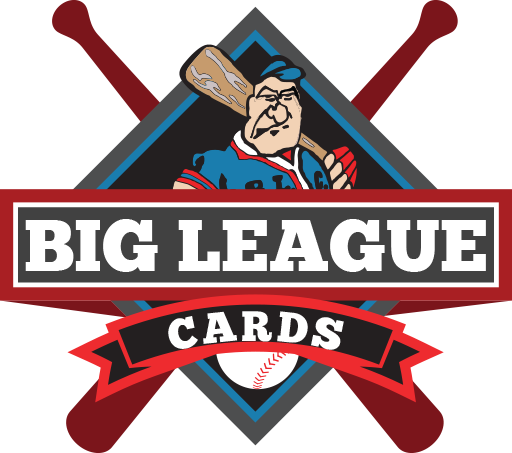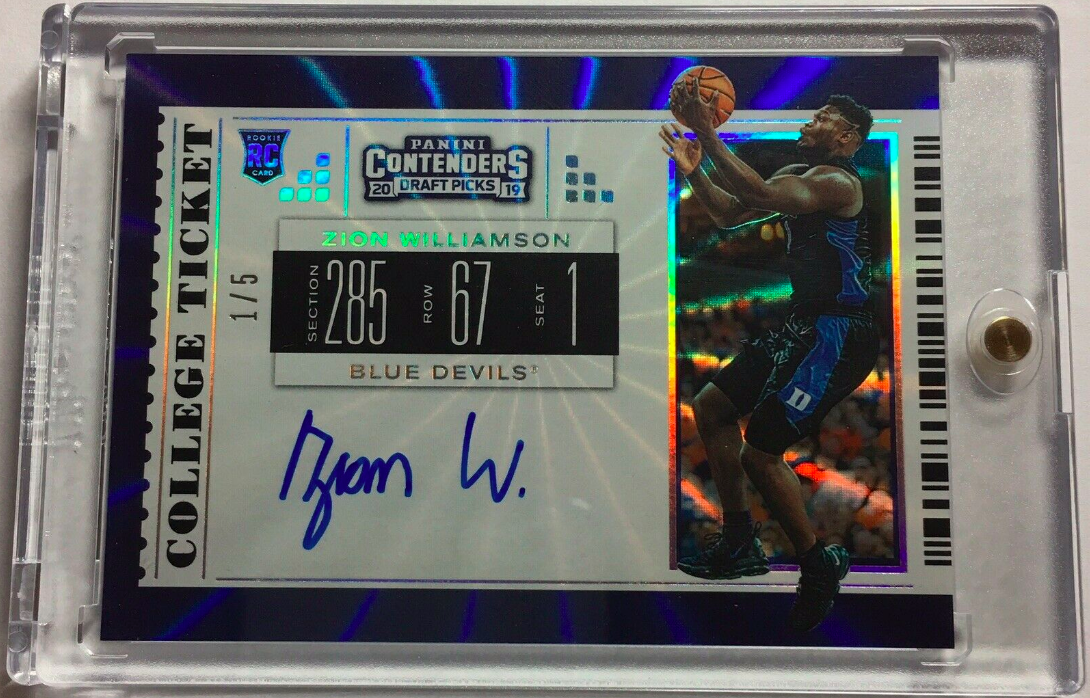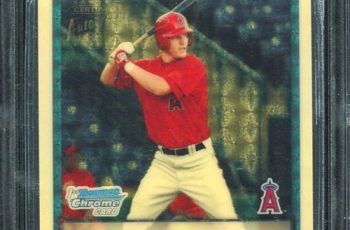Inside the Pack: Zion Williamson the Latest in a Long Line of Hyped Rookies
The biggest recent sports card news hasn’t involved baseball, whose season is winding down. It hasn’t involved football, whose season is starting up. It hasn’t even involved Topps, the biggest and longest-tenured sports card company. No, the biggest recent sports card news has been basketball-related. I’m talking, of course, about Zion Williamson’s first official cards.
Panini Contenders Draft was released last week, and with it came Williamson’s first major card release. The New Orleans Pelicans’ first overall pick in the draft, Zion appears on the card — as all players in this set do — in his college duds, representing Duke University. The sales prices thus far have been tremendous. Low-numbered autographs have been selling upwards of $5,000 each. There is a 1/1 autograph listed on ebay at this moment for $95,000 and it has 370 watchers.
Hype with young players is nothing new. We’ve seen it in all sports over the past decade or so. Football has had its share of quarterback hype, like Johnny Manziel and Andrew Luck. It’s also had massive rookie classes just over ten years ago, like the 2007 products that had Adrian Peterson, Jamarcus Russell, Calvin Johnson and Brady Quinn. The 2006 products were loaded with Matt Leinart, Vince Young, Reggie Bush, and Jay Cutler.

Baseball’s hype has been limited more toward individual players. Last year was Shohei Ohtani; 2015 was Kris Bryant. Nothing will match the back-to-back crazes of 2010 Stephen Strasburg and 2011 Bryce Harper. Basketball’s first-overall-pick mania has a long list of participants as well: Ben Simmons, Kyrie Irving, Blake Griffin, and Greg Oden.
If you’re looking for a common thread in this group of players, there certainly is one: the vast majority of these guys end up worth significantly less than when they first hit the market. Ignoring the extremely high miss-rate among the names I noted, even the players who have panned out sell for much less than they did on or near release date. The saga of the 2010 Bowman Chrome Stephen Strasburg superfractor, for example, is well documented: between May and July of 2010, the card sold for $16,403, then was graded as a BGS 9.5 and sold again for $21,403 to Leaf Trading Cards owner Brian Gray. After being inserted in a Leaf buyback product, it was pulled in 2011, and sat in a private collection until its sale in 2015 for $3,289. It then sold again in August of 2017 for $5,600. To be clear, that sum is nothing to look down upon, but it’s also one-third of its previous sales price and one-fourth of its highest sales price — and this is one of the most iconic and storied modern baseball cards.
This is not the exception; in fact, any deviations from this trend are the exceptions. Take the 2015 Topps Chrome Kris Bryant superfractor auto, which sold for $15,000 in July of 2017 as a raw card; after being graded a PSA 10, it sold for $11,100 — 26% less — in August of 2018. Or the 2018 Bowman Chrome Orange Refractor auto of Shohei Ohtani, which sold as a BGS 9.5 last December for $7,356, then saw a PSA 10 copy sell this past February for $6,600 before the same PSA 10 copy sold again in May for $5,100.
So when I see the prices for hyped rookies like Zion Williamson, I can’t help but wonder why. Assume everything works out with Williamson and he’s the next Lebron James. Well, for about the same money as you’d pay for a Zion auto numbered to 23 — less than $3,000 — you could have bought a 2003-04 Lebron James UD Standing O rookie auto with a print run of 50. Zion might be the next Lebron, but Lebron already IS Lebron. Ohtani might be the next Babe Ruth, but Babe Ruth already IS Babe Ruth.
In the end, investing in The Next Hot Thing is a high risk proposition that can absolutely pay huge dividends if you strike at the right time. But sports card collecting is ultimately a what-have-you-done-for-me-lately industry; as another young player gets hot, money for the last flavor of the month dries up in favor of the newest kid on the block. But legends are always legends. They don’t risk an injury derailing their careers, and their stats are already well-established. While they’re less likely to see the high price spikes of hot rookies, they’re also unlikely to ever see the dips that occur with the younger players. For my money, I’d take the well-established player any day.





